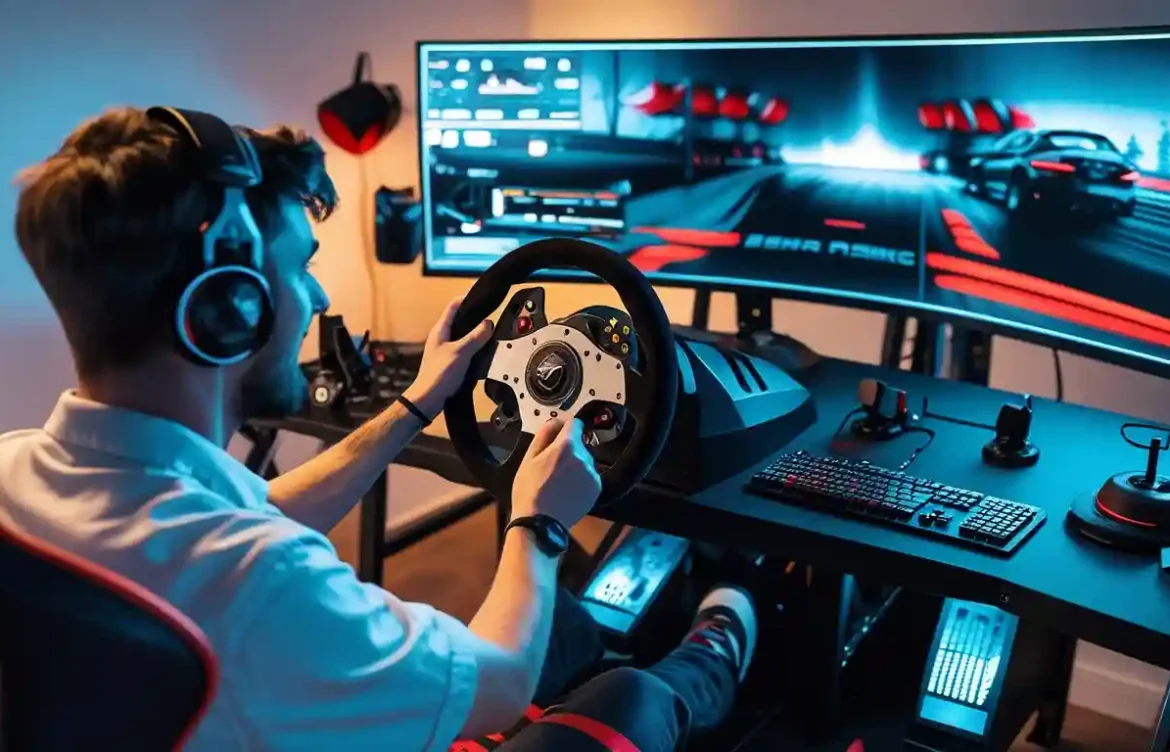
How to Setup Racing Simulator for Beginners in 2025?
Do you remember the feeling when you rode your first car, you were very excited, weren’t you? Don’t you wanna experience the same sensation? As technology and games are developing on a regular basis, you can experience the real F1 racing. By building a proper racing simulator setup, you can feel the same adrenaline right in your room.
Have you ever heard of Lewis Hamilton? Lewis Hamilton is a British racing driver, and that’s not only it, as he is one of the best racers in the world. For enthusiasts, racing is an experience closest to feeling what Lewis Hamilton experiences in every race. It’s about precision, immersion, and the pure joy of mastering the track.
Winning feels great, but at the end of the day, the sensation of driving your favourite car and being on a track is everything; this can be achieved by playing racing games on your racing simulator for beginners or pros.
Gaming Tech Series will walk you through everything till you have made your own racing simulator. By the time you finish reading, you’ll be in your gaming chair or racing simulator cockpit, and enjoying a lovely race by controlling your dream car with a steering wheel.
What is Sim Racing?
Sim racing is a video game genre that tries to replicate the experience of driving a car (of any sort) on any track, as real as it can be. Usually, when we talk about sim racing, it is about driving beast cars on race tracks. These games focus on accurate physics, handling, and realistic variables like fuel consumption, tire wear, and suspension settings.
Sim racing is often used by real-world racers for training and preparation.
What is a Racing Simulator?
A racing simulator is a setup build of hardware and software that allows you to experience what it’s like to drive a race car realistically while you are at home or in an arcade. It comprises of a racing game, steering wheel, pedals, shifters, handbrakes, and much more, making it feel like you’re in a real f1 racing car.
Racing simulators are used for fun, training, or serious racing practice.
If you are not familiar with racing simulator setup, let’s break down what an entire racing simulator package is made of:
Components of Racing Simulator
- Racing Wheel
- Pedals
- Shifter
- Handbrake
A basic racing simulator for beginners or even intermediate-level drivers needs four essential components. Each component has a certain purpose, and it helps improve your racing experience by a lot, and trust me, it’s by a lot!
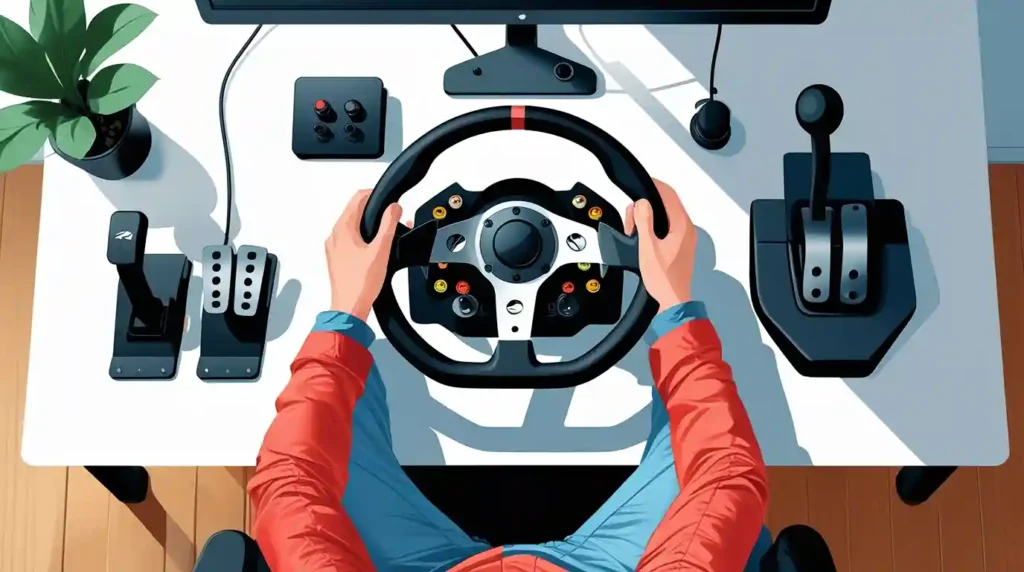
Racing wheel: A racing wheel is a unique type of controller shaped like a real car steering wheel. It lets you steer your vehicle, i.e., car, bike, plane, and more, in racing games.
Pedals: Pedals are foot controls that work like a real car’s gas, brake, and sometimes clutch. They help make driving feel more realistic.
Shifter: A shifter is a gear stick you can use to change gears manually, just like in a real car with a manual transmission.
Handbrake: A handbrake is a lever used to lock the rear wheels, mostly for drifting or making sharp turns in racing games.
As a senior gamer, I strongly request you to take it slow and don’t overspend on your first setup unless you are making enough that you don’t have to worry about budget.
Balance is key, especially when working with a limited budget.
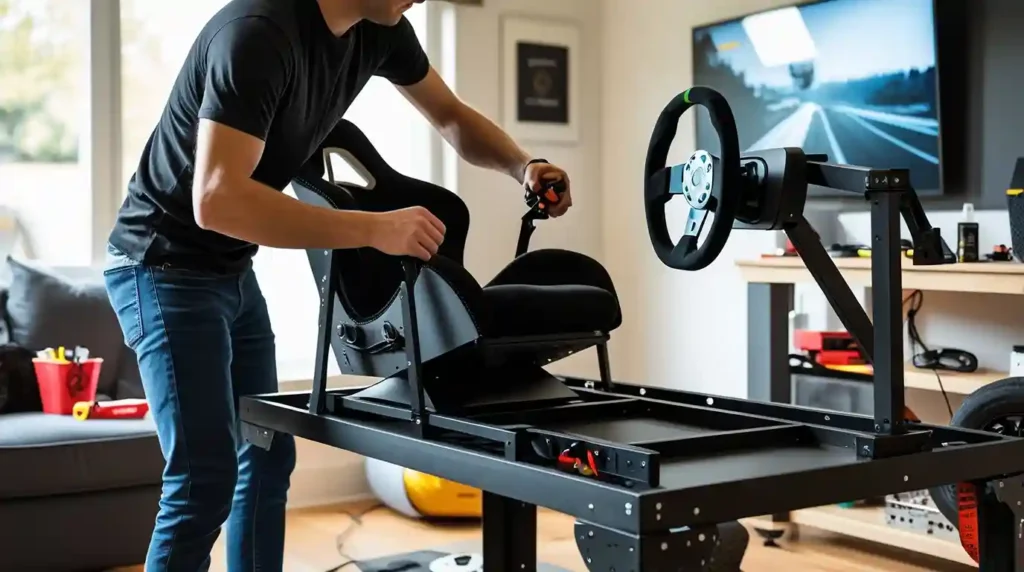
How to Setup Racing Simulator?
Step 1: Assess Your Space and Specify Your Budget
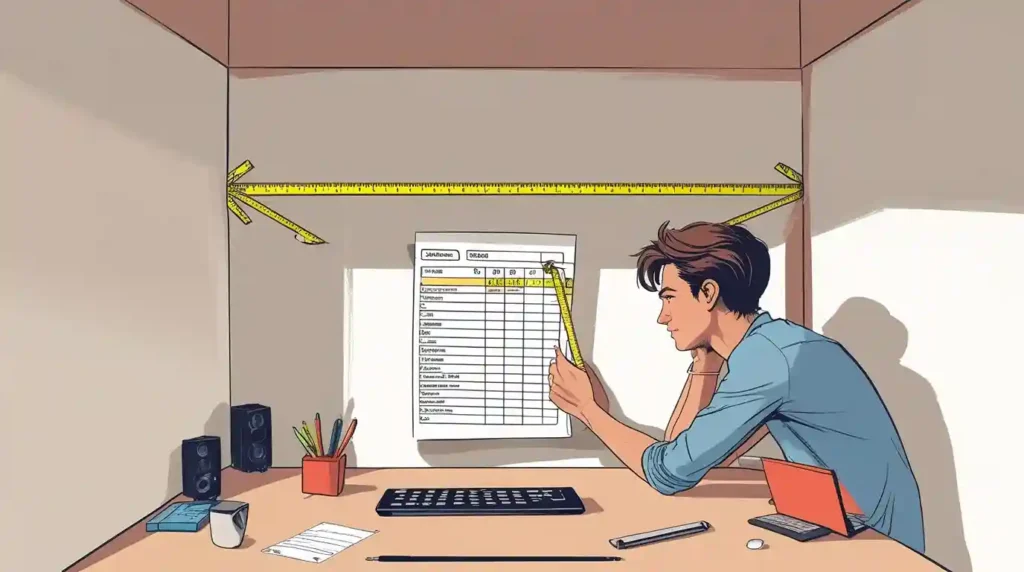
Before buying anything, evaluate the following things:
- Available Space: Measure your room and assess how much spare space you have.
- Budget Reality: The more you spend, the better it will be.
- Long-term Plans: If you just want to play in your leisure time, then don’t overspend on the build.
Most beginners can create a satisfying racing simulator setup between $500-$800. The beauty of sim racing is its scalability. You can start with a budget-friendly setup and upgrade systematically as your skills and interests grow.
That’s why you don’t have to worry now if you don’t have the budget.
Step 2: Choosing Your Racing Wheel and Pedals
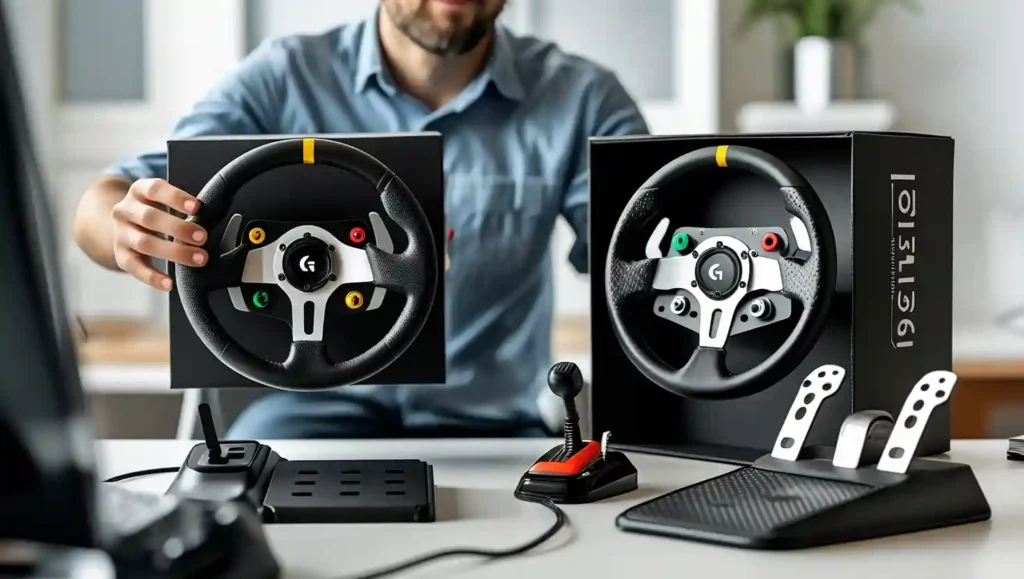
Your wheel and pedals are where virtual becomes physical. This tactile connection makes or breaks the experience, and honestly, THIS INVESTMENT does matter.
Racing wheels for beginners under a budget:
- Logitech G29/G920
It offers quality force feedback (the resistance you feel when turning), which is absolutely essential for any appropriate racing simulator.
Meanwhile, other cheap wheels may be lower in quality, and with no force feedback at all. Those budget wheels will work, but again, they won’t give you a proper racing simulator experience – it will be dull, and I can guarantee you won’t enjoy it much.
Try to look for in the wheel you purchase:
- Force Feedback
- Solid construction
- Metal pedals that won’t slide
- Compatibility with your chosen platform (PC, Xbox, PlayStation)
The wheel’s rotation range (how far it turns) should be at least 900 degrees for a realistic simulation. Anything less feels more like an arcade game than a simulator.
Step 3: Creating a Stable Mounting Platform
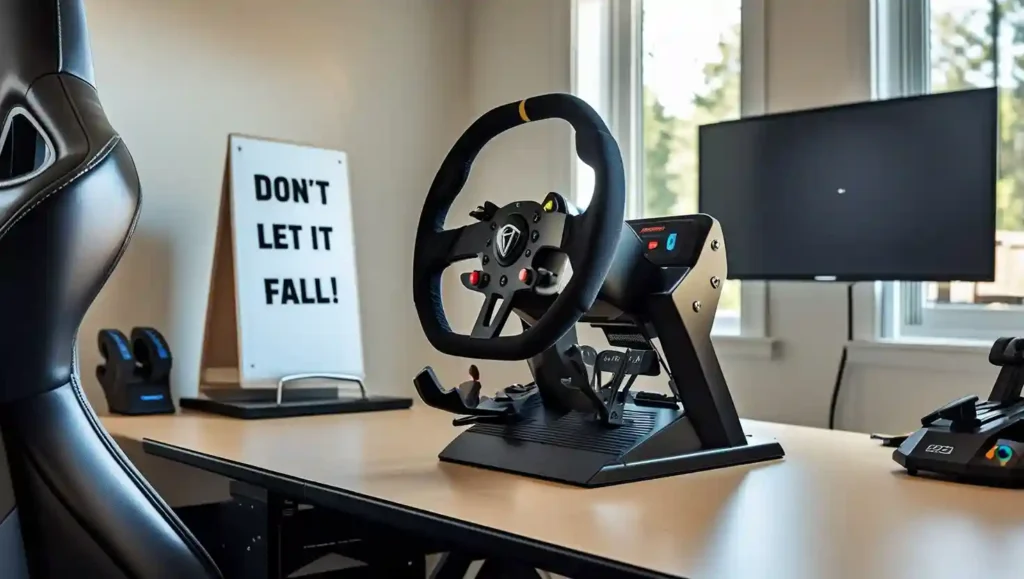
Your equipment needs mounting stability. There’s nothing worse than a wheel that shifts during critical corners or pedals that slide away – it can cause destruction. LIKE LITERAL DESTRUCTION – IF IT FALLS ON YOUR LEGS, or on something valuable, then BAMMM!
So you should create a stable platform on which you can mount your wheel.
Budget Solutions:
* Desk Mounting: Many wheels include desk clamps, so just ensure your desk is sturdy
* Wheel Stands: Portable options like the Next Level Racing Wheel Stand
* DIY Platforms: Simple wooden constructions can be surprisingly effective
Entry-Level Racing Simulator Cockpits:
* Playseat Challenge: Foldable, apartment-friendly
* GT Omega APEX: Adjustable and upgradeable
Step 4: Display Setup for Maximum Enjoyment
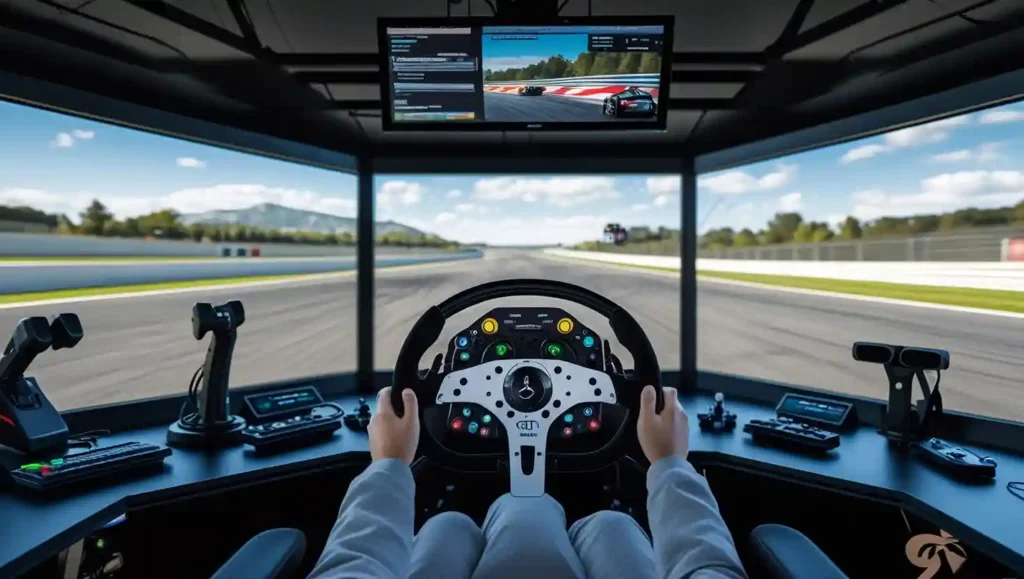
Your visual system determines how connected you feel to the virtual track, it can level up your racing simulation experience.
Practical Options:
* Single Monitor Setup: Use what you have, but aim for at least 27″ if purchasing
* Triple Monitor Configuration: The gold standard for peripheral vision (but expensive)
* VR Headset: Ultimate immersion if your system can handle it
For beginners, a single large monitor positioned directly behind your wheel provides the best value. Position it as close as practical to your wheel for greater immersion.
Key considerations:
* Response time under 5ms
* Refresh rate of at least 60Hz (144Hz preferred)
* Proper FOV (field of view) settings in your racing software
Step 5: Selecting Your Racing Platform and Software
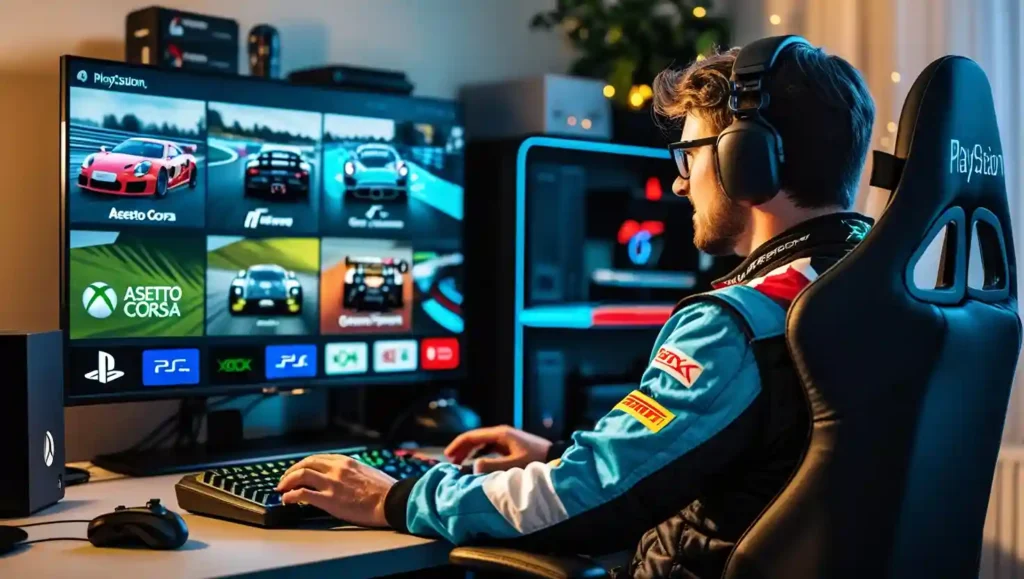
Your hardware needs quality software to shine.
Console Options:
* PlayStation: Gran Turismo
* Xbox: Forza Motorsport
PC Simulation:
* iRacing
* Assetto Corsa
* Forza
Beginners should start with titles like Assetto Corsa, Forza, or F1 24, which offer driving assists while still providing authentic simulation when you’re ready.
Practical Setup and Configuration Tips
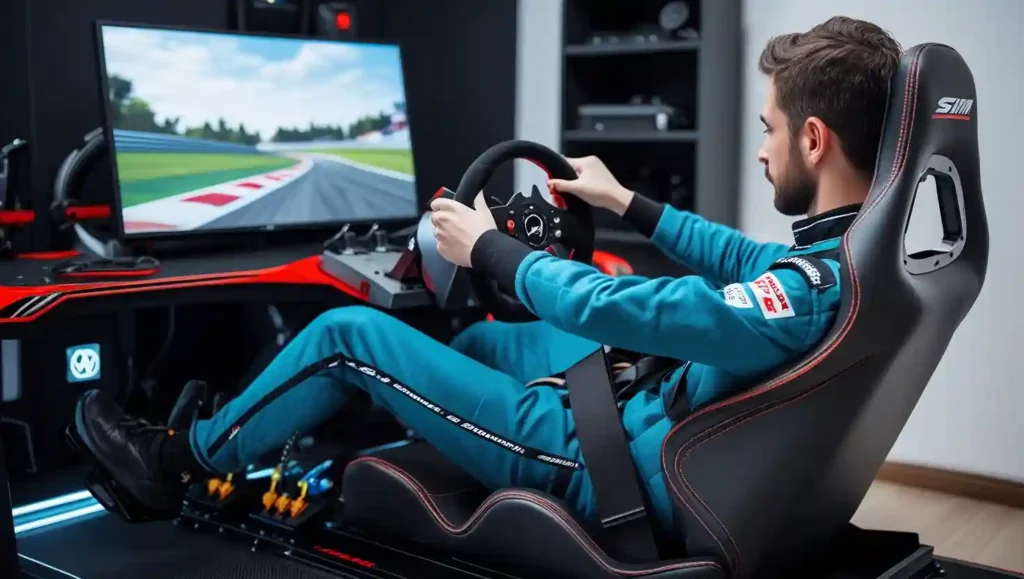
Tip 1: Finding the Perfect Driving Position
The right positioning transforms your experience:
- Seat Distance: You should be able to fully depress the pedals without stretching
- Wheel Height: Center should align with your shoulders or slightly lower
- Wheel Distance: Arms should have a slight bend at the elbow when gripping
Proper ergonomics prevents fatigue during longer sessions and improves control precision.
Tip 2: Configuring Your Force Feedback
Don’t use default settings! Take time to properly configure your wheel’s force feedback:
- Start with community-recommended settings for your specific wheel and game
- Reduce forces if you feel fatigued quickly
- Ensure you can feel subtle road surface changes without excessive vibration
The goal is communicative feedback, not wrestling with the wheel on every corner. Like, think about it, why would you wrestle with the wheel and expect it to be durable?
Tip 3: Software Calibration Essentials
Before your first race:
- Steering Sensitivity: Start conservative, adjust gradually
- Brake Calibration: Critical for consistent performance
- Button Mapping: Customize for your driving style
Take time to learn how to adjust these in each simulator—they’re rarely universal.
Avoiding Common Beginner Mistakes
Many new sim racers make these costly errors:
- Overspending Initially: Start modest, upgrade systematically
- Ignoring Cable Management: Messy cables create hazards and frustration
- Choosing Flash Over Function: Prioritize mechanical quality over aesthetics
- Skipping Calibration: Taking time to properly configure everything pays enormous dividends
The most common mistake? Expecting instant speed. Even in simulation, racing requires practice and patience.
When to Begin Your Racing Simulator Journey?
Setting up your first racing simulator is very easy. It doesn’t have any hard rules. You just have to plan carefully and have realistic expectations.
Start with the basics, buy core racing simulator components, properly configure them, and optimize your game accordingly.
The true magic of sim racing isn’t in having the most expensive equipment. It’s in those moments when you nail a perfect qualifying lap, execute a clean overtake, or simply lose yourself in the pure joy of driving at the limit.
These experiences are something that even a well-planned beginner racing simulator setup can deliver beautifully. So what are you waiting for?
FAQs – Racing Simulator for Beginners
What do I need to start sim racing?
To start sim racing, you need a compatible gaming platform (PC or console), a force feedback racing wheel, a set of pedals, and a sturdy rig or stand. Optional gear includes a shifter, handbrake, and a dedicated display or VR headset. Start with the essentials and upgrade as your passion grows.
Is VR or triple screen better for sim racing?
Triple screens offer a wider field of view and better peripheral vision, making them ideal for competitive sim racers. VR provides deeper immersion and realism but may cause motion sickness for some users. The best choice depends on your comfort, budget, and space.
Are load cell pedals worth it?
Yes, load cell pedals are worth the upgrade for serious sim racers. They measure pressure instead of distance, offering a more realistic braking feel, improved consistency, and better lap times. They’re especially valuable for those racing competitively or practicing real-world techniques.
Can I build a DIY sim racing cockpit?
Absolutely. You can build a DIY sim racing cockpit using wood, metal, or PVC, tailored to your space and budget. While it may lack polish compared to commercial rigs, a DIY setup can still offer excellent stability and comfort with the right design and tools.
